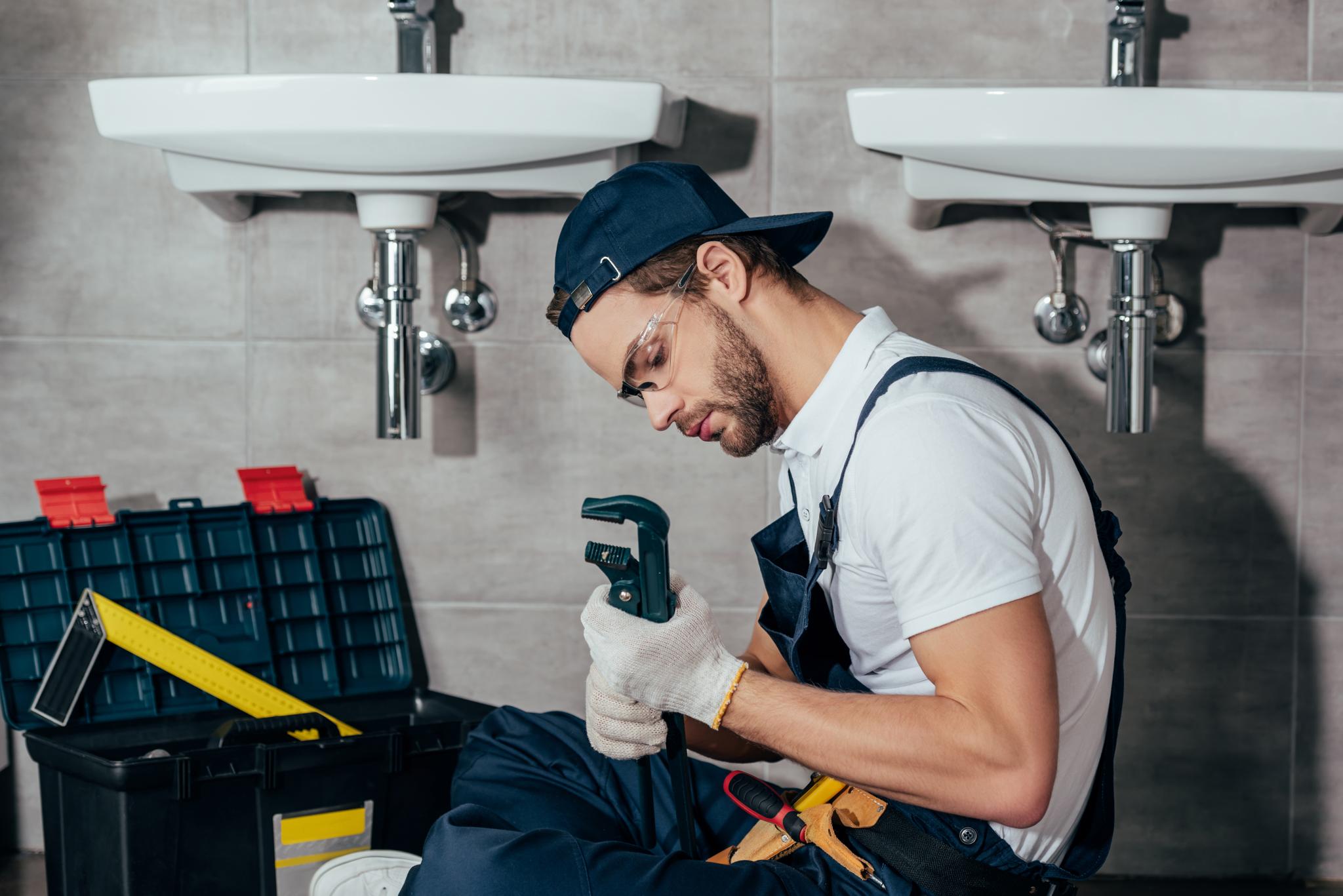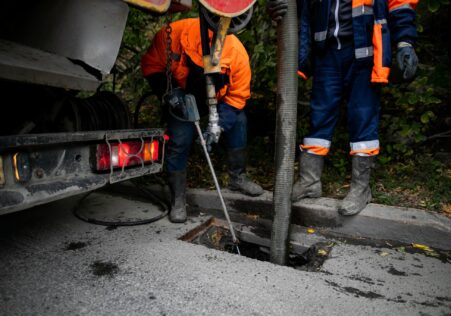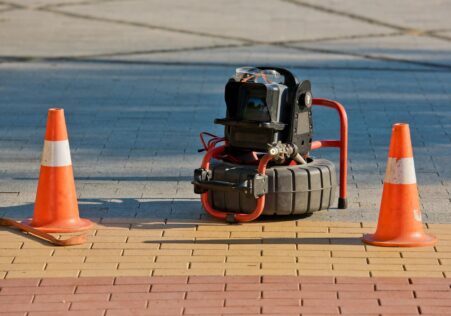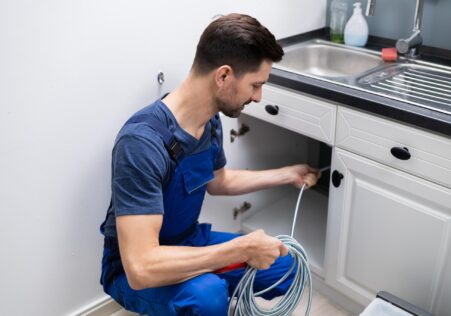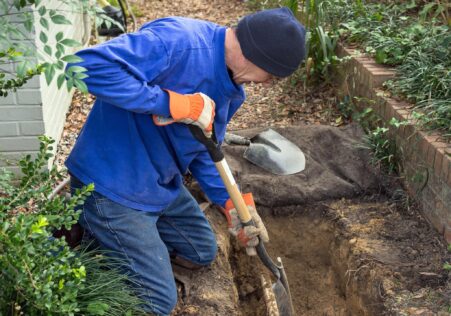What to Do When Your Toilet is Blocked: A Step-by-Step Guide

Toilet blockages can occur at any moment and are a common issue for homeowners. They can be uncomfortable and messy and requires immediate attention. However, you don’t have to contact the plumber right away. In this blog we’ll take you through a few easy steps to clear your toilet in no time.
Key Takeaways
- Toilet blockages are easily remediated using simple tools and techniques like plungers, baking soda
The Tools You’ll Need
Before we start we must be prepared with these tools:
- Rubber Gloves
- Plunger
- Baking Soda and Vinegar (Optional)
- A Wire Coat hanger, or a Plumber Snake (Optional)
Step 1: Turn off your water source valve.
The first thing you need to do when confronted with a blocked toilet is to shut off the supply of water on the toilet. This step ensures that there is no further water entering the tank during your work on unclogging it. The valve usually is situated near on the floor of your tank on one side.
Step 2: Protect yourself by wearing rubber gloves.
Hands must be protected from any germs or bacteria present in your toilet with rubber gloves before using any tools for unclogging.
Step 3: Use a plunger.
The plunger is by far the most efficient tool for clearing up blocked toilets. First, push down gently onto the plunger till all air is removed from it, then press it hard over the toilet bowl. Begin to plunging quickly up and down for around 20 minutes. The suction that is created when you plunge back and forth will remove any blockages.
Tips:
- Make sure you are using a strong but controlled movement.
- Fill in holes around sinks and shower drains if they’re close enough to prevent air pressure escaping as you plunge.
Step 4: Test baking soda with vinegar.
If the plunge doesn’t work then try this alternative method - pour half a cup of baking soda and a cups of white vinegar to the toilet. Let the mixture sit for around 15 minutes. It will fizz a bit, and when it stops then pour boiling water down (not overly hot) to eliminate the blockage.
Step 5 Step 5: Use an iron coat hanger made of wire or plumbing snake.
If plunging, baking soda and vinegar have not worked and you are in need of a solution, it’s the right time to utilize an electric coat hanger or plumbing snake. You can straighten out the coat hanger’s cord until you have a long thin wire that has a hook bent at one end or use the plumbing snake, which was specifically designed for clearing drain blockages. Install the snake in the drain hole in your toilet and then twist, turn, push or pull until you feel resistance; it’s the place where the blockage is. Be gentle and try to break any blockages using back-and-forth motion without causing damage to your pipeline.
Note:
- Don’t push or pull actions too hard, as they could cause more harm.
Step 6: Turn on the water supply and check the results.
Once you’ve removed any obstructions, it’s vital to turn on the water supply valve that is behind the toilet bowl. After that, flush it a few times to make sure that the water is flowing freely!
| Tools | Description |
|---|---|
| Rubber Gloves | Hand protection from potential bacteria or germs present in the toilet bowl. |
| Plunger | Most effective tool for clearing up blocked toilets. Press firmly over the hole in your toilet bowl and plunge vigorously up and down for about 20 seconds. |
| Baking Soda and Vinegar | Mixture to use if plunging doesn’t work. Pour half a cup of baking soda and one cup of vinegar into the toilet bowl. Let this mixture settle for about 15 minutes, then pour hot water down (not boiling) to flush out the blockage. |
| Wire Coat Hanger or Plumbing Snake | Tools to use if both plunging and baking soda/vinegar methods have failed. Straighten the wire coat hanger until you have a long thin wire with a hook bent at one end or use the plumbing snake, which is designed specifically for clearing drain clogs. |
FAQ
How can I tell if my toilet is blocked?
A frequent symptoms of a blocked toilet is when water levels rise to the top of the toilet after flushing. It is also possible to notice that the water drains in a slow manner, or hear the sound of gurgling from the toilet.
What should I do if my toilet is blocked?
If you believe your toilet is blocked and you are unable to flush it, do not attempt to flush it over again since this could cause flooding. Instead, turn off your water source to the valve in front of the toilet and use a plunger to try to clear any obstructions. If this isn’t working, call Blocked Drains Plumbers Sydney for professional help.
How can I stop my toilet from getting blocked?
Yes! There are a variety of actions you can take to avoid your toilet getting blocked, including avoiding flushing items that are not biodegradable, such as the sanitary products, wet wipes or cotton wool in the toilet. You should also avoid the practice of pouring oil or grease down the sink, as it can cause solidification and cause blockages to pipes.
What is the best time to call an experienced plumber to fix a blocked toilet?
If you’ve tried plunging your toilet, but it isn’t unblocking, or you think there’s a larger issue with your plumbing system that’s causing frequent blockages, you need to get in touch with a professional plumber, such as Blocked Drains Plumbers Sydney . We’ve got years of experience dealing with any plumbing problem that we can quickly detect and resolve any issues without causing any disruption to your home.
Do I need to have my drains cleaned?
It is recommended that you get clean your drains by a professional like Blocked Drains Plumbers Sydney every 1-2 years. This will help prevent obstructions and keep your plumbing system running smoothly. However, if you frequently have problems with drains blocking or slow draining of water despite trying to avoid clogging them, then yearly cleaning can be beneficial.
These procedures are fairly easy to execute, and most of these products are easily available in homes. When facing blocked toilets before worrying after trying the strategies, you should contact Blocked Drains Plumbers Sydney ‘s expert plumbers located in Sydney , if you’re looking for professional assistance with problems with your blocked toilets.
Additional Information
- The Benefits of Using CCTV Drain Inspection for Pipe Relining Services
- Natural Methods for Keeping Your Shower Drain Free of Blockages
- How CCTV Drain Inspection Helps in Saving Time and Money on Plumbing Repairs?
- A Comprehensive Overview of CCTV Drain Inspection for Your Home
- Blocked Drain Emergency? Here’s What You Need to Know About DIY vs. Professionals
- How to Tell You Need Drain Clearing Services for Your Business
- Get Ready for Your Close-up: Tips on How to Prepare for a CCTV Inspection of Your Drains
- The Dangers of Using Chemical Drain Unblockers
- Preventing Clogs and Blockages: Best Practices for Maintaining Your Drains
- How CCTV Drain Inspection Can Save You Money in the Long Run


